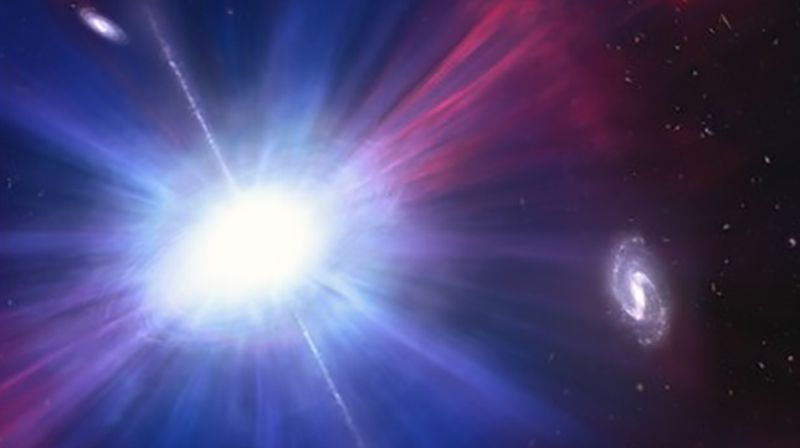| Nov 16, 2023 |
'Never witnessed before' - Astronomers baffled by repeat explosions 100 billion times the energy of the Sun
|
|
(Nanowerk News) Astronomers are baffled by a mysterious and extremely bright event in the distant Universe, nicknamed the “Tasmanian Devil”, which has been observed to explode repeatedly and emit more energy than hundreds of billions of stars like our Sun.
|
|
The report, published in Nature ("Minutes-duration optical flares with supernova luminosities"), describes a Luminous Fast Blue Optical Transient (LFBOT) monitored in a new way and shown to have unusual behaviour. LFBOTs are rare, extremely powerful events – more powerful than a supernova – that evolve on timescales of just a few days, fading away rapidly. However, this LFBOT continued to explode with supernova-like energies many times, well after its initial burst and fade.
|
 |
| An artist's concept of one of the brightest explosions ever seen in space. Called a Luminous Fast Blue Optical Transient (LFBOT), it shines intensely in blue light and evolves rapidly, reaching peak brightness and fading again in a matter of days. Only a handful of previous LFBOTs have been discovered since 2018. (Image: NASA, ESA, NSF's NOIRLab, Mark Garlick , Mahdi Zamani)
|
|
“An event like this has never been witnessed before,” said co-author of the paper Professor Jeff Cooke from Swinburne University of Technology and the ARC Centre of Excellence in Gravitational Wave Discovery (OzGrav). He led observations using the W. M. Keck Observatory in Hawaii as part of this work.
|
|
When LFBOTs explode, “they emit more energy than an entire galaxy of hundreds of billions of stars like the Sun. The mechanism behind this massive amount of energy is currently unknown,” Professor Cooke said.
|
|
“But in this case, after the initial burst and fade, the extreme explosions just kept happening, occurring very fast – over minutes, rather than weeks to months, as is the case for supernovae.”
|
|
“Amazingly, instead of fading steadily as one would expect, the source briefly brightened again, and again, and again,” Cornell University Assistant Professor Anna Ho, lead author on the paper said.
|
|
“LFBOTs are already a kind of weird, exotic event, so this was even weirder,” Assistant Professor Ho said. Data from the multiple observatories, including one with a high-speed camera, detected at least 14 irregular and highly-energetic bursts over a 120-day period. “However, these bursts are likely only a fraction of the total number”, Assistant Professor Ho said.
|
|
The LFBOT event, which occurred on 7 September 2022, is puzzling according to Professor Cooke. “It pushes the limits of physics because of its extreme energy production, but also because of the short duration bursts. Light travels at a finite speed. As such, how fast a source can burst and fade away limits the size of a source, meaning that all this energy is being generated from a relatively small source.”
|
|
The current theory is that a black hole or neutron star formed by the initial explosion is accreting an immense amount of matter and causing the subsequent intense bursts.
|
|
The W.M. Keck Observatory observations were part of a larger program of 15 observatories around the world used to monitor this LFBOT, with the Keck visual wavelength observations coordinated to occur simultaneously with X-ray observations taken by the NASA Chandra Space Telescope.
|
|
“These are important to help understand the nature of this source, how these massive stars transition during their death process, and to help find more events to understand how common they are in the Universe,” Professor Cooke said.
|

